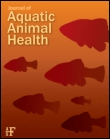
JOURNAL OF AQUATIC ANIMAL HEALTH
Scope & Guideline
Pioneering insights in aquatic animal health.
Introduction
Aims and Scopes
- Aquatic Animal Health Management:
Research dedicated to understanding health management practices in aquatic species, including disease prevention and treatment methodologies. - Pathogen Detection and Characterization:
Studies focusing on the identification and characterization of pathogens affecting aquatic species, including bacteria, viruses, and parasites. - Physiological Responses to Environmental Stressors:
Research examining how aquatic animals respond physiologically to various environmental stressors, such as temperature fluctuations, pollution, and chemical exposure. - Nutritional and Dietary Impacts on Health:
Investigations into how dietary components and nutrition affect the health, growth, and immune responses of aquatic species. - Innovative Diagnostic Techniques:
Development and application of novel diagnostic tools and techniques for the early detection of diseases in aquatic animals. - Epidemiology and Disease Dynamics:
Studies that explore the epidemiology of diseases in aquatic populations, including transmission dynamics and outbreak investigations.
Trending and Emerging
- Molecular and Genetic Approaches to Disease Management:
An increasing number of studies are employing molecular techniques, such as real-time PCR and LAMP, to detect pathogens and understand genetic factors influencing disease resistance. - Impact of Environmental Pollutants on Aquatic Health:
Research focusing on the effects of pollutants, such as heavy metals and pharmaceuticals, on the health and physiology of aquatic animals is gaining traction. - Probiotics and Synbiotics in Aquaculture:
There is a rising interest in the use of probiotics and synbiotics to enhance fish health, growth performance, and immune responses, reflecting a shift towards more holistic aquaculture practices. - Advanced Imaging and Diagnostic Techniques:
Emerging techniques, such as computed tomography and magnetic resonance imaging, are being increasingly utilized to assess health issues in aquatic species, showcasing advancements in diagnostic capabilities. - Microbiome Research in Aquatic Species:
The exploration of gut microbiomes and their influence on health and disease in aquatic animals is becoming a prominent area of research, with implications for nutrition and disease management.
Declining or Waning
- Traditional Aquaculture Practices:
Research related to conventional aquaculture practices is becoming less frequent as the focus shifts towards more sustainable and innovative approaches to fish farming. - Generalized Pathogen Treatments:
Studies that provide broad-spectrum treatments for aquatic pathogens are waning, with a growing preference for targeted and species-specific therapeutic strategies. - Static Water Quality Assessments:
Research focusing solely on static water quality assessments is declining, as more studies emphasize dynamic and integrated approaches to water quality management. - Historical Data Analysis:
There is a noticeable reduction in studies that rely on historical data to assess trends in aquatic health, as contemporary research increasingly utilizes real-time monitoring and data analytics. - Non-specific Immune Responses:
Research concentrating on non-specific immune responses is decreasing in favor of studies that explore specific immune mechanisms and genetic factors influencing disease resistance.
Similar Journals

Animal Nutrition
Driving Innovation in Veterinary Food Animal ScienceAnimal Nutrition is a premier open-access journal dedicated to advancing the understanding of nutritional science in animals, published by KEAI PUBLISHING LTD. Established in 2015, this journal has quickly risen to prominence within its field, securing a Q1 ranking in both Animal Science and Zoology and Food Animals as of 2023. With an impressive Scopus ranking, positioned first among 39 journals in Veterinary Food Animals and tenth among 490 in Agricultural and Biological Sciences - Animal Science and Zoology, it remains a critical resource for researchers, professionals, and students alike. The journal's commitment to open access ensures that cutting-edge research is readily available to a global audience, fostering the dissemination of knowledge that drives innovation in animal nutrition and health. With a focus on the intersection of animal physiology, dietary interventions, and food production systems, Animal Nutrition plays a pivotal role in shaping sustainable practices and improving animal welfare worldwide.
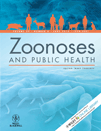
Zoonoses and Public Health
Advancing knowledge at the wildlife-human health interface.Zoonoses and Public Health is a leading peer-reviewed journal published by WILEY, based in Germany. Focused on the intersection of wildlife, domestic animal, and human health, the journal addresses critical issues concerning zoonotic diseases, their impact on public health, and strategies for prevention and control. With an impressive impact factor reflecting its significance, the journal ranks in the Q2 category across multiple fields, including Epidemiology, Public Health, and Infectious Diseases, underscoring its pivotal role in advancing research in these vital areas. As it converges from 2007 to 2024, Zoonoses and Public Health is committed to fostering interdisciplinary collaboration and publishing high-quality research that informs policy and practice. Researchers, professionals, and students alike can access vital insights through its open access options, making it an indispensable resource for anyone invested in understanding and mitigating the effects of zoonoses on public health.

Frontiers in Animal Science
Shaping the future of animal research, one study at a time.Frontiers in Animal Science is a pioneering academic journal dedicated to advancing knowledge and innovation in the fields of animal science and zoology. Published by FRONTIERS MEDIA SA in Switzerland, this open-access journal aims to bridge the gap between research and practice by providing a platform for impactful studies and discoveries. With an impressive Q2 classification in animal science and zoology for 2023, it ranks #222 out of 490 journals within the Scopus database, placing it within the 54th percentile of academic journals in its category. Since its inception in 2020, Frontiers in Animal Science has fostered interdisciplinary collaboration and innovation, encouraging researchers, professionals, and students alike to share their work and insights. By facilitating unrestricted access to quality research, this journal plays a crucial role in shaping the future of animal science and enhancing our understanding of animal biology and welfare.

FISH PATHOLOGY
Exploring the depths of fish disease pathology.FISH PATHOLOGY is a vital journal dedicated to the field of aquatic animal health, published by the Japan Society of Fish Pathology. With a strong publication history dating back to 1967, this interdisciplinary journal aims to promote high-quality research focusing on the pathologies affecting fish and other aquatic organisms. Despite its category quartiles ranking of Q3 in both Animal Science and Zoology and Aquatic Science, the journal maintains a growing presence within the scientific community, holding a respectable position in Scopus rankings. Researchers and professionals looking for deep insights into fish health management and disease pathology will find FISH PATHOLOGY to be an invaluable resource for advancing knowledge and fostering collaboration in this essential area of study. Although the journal does not currently offer open access, its comprehensive analyses and findings are crucial for both academic and practical applications in fisheries and aquaculture worldwide.
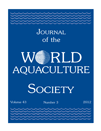
JOURNAL OF THE WORLD AQUACULTURE SOCIETY
Connecting Scholars for Sustainable Aquatic PracticesThe JOURNAL OF THE WORLD AQUACULTURE SOCIETY, published by WILEY, serves as a premier platform for researchers, practitioners, and academics in the thriving fields of aquaculture and aquatic sciences. With an ISSN of 0893-8849 and an E-ISSN of 1749-7345, this esteemed journal boasts an impressive ranking in Scopus, placing it in the Q1 quartile for both Agronomy and Crop Science and Aquatic Science. Recognized for its rigorous peer-review process and high-quality publications since its inception in 1986, the journal continues to play a vital role in disseminating cutting-edge research that addresses the complex challenges and opportunities within aquaculture practices globally. The journal's impact is underscored by its rank of #37 out of 247 within the category of Aquatic Science and #70 out of 406 in Agronomy in 2023, positioning it firmly in the top tier of scholarly journals. Researchers and professionals will find an invaluable resource in this journal, which not only aims to advance scientific knowledge but also fosters a community committed to sustainable aquatic development.

OCEANOLOGICAL AND HYDROBIOLOGICAL STUDIES
Exploring the depths of oceanic knowledge.OCEANOLOGICAL AND HYDROBIOLOGICAL STUDIES, published by WALTER DE GRUYTER GMBH, serves as a crucial platform for the dissemination and discussion of pivotal research in the field of oceanography and hydrobiology. With an ISSN of 1730-413X and an E-ISSN of 1897-3191, this journal highlights interdisciplinary studies that address pressing ecological issues impacting marine environments. Although it currently ranks in the Q4 category of oceanography journals and holds a Scopus rank of 96 out of 145, its commitment to publishing high-quality research positions it as a valuable resource for researchers, professionals, and students alike. As it converges into 2024, OCEANOLOGICAL AND HYDROBIOLOGICAL STUDIES remains dedicated to advancing our understanding of aquatic systems, contributing significantly to the scientific community's efforts in ocean conservation and management.
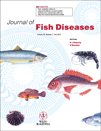
JOURNAL OF FISH DISEASES
Shaping the future of fish disease management and research.JOURNAL OF FISH DISEASES, published by WILEY, stands as a preeminent peer-reviewed journal in the fields of aquatic science and veterinary medicine. With its ISSN 0140-7775 and E-ISSN 1365-2761, this journal has been a leading platform for disseminating groundbreaking research since its inception in 1978. Recognized for its excellence, it boasts a Q1 ranking in both Aquatic Science and Veterinary (miscellaneous) categories for 2023, affirming its vital role in advancing knowledge in fish pathology and health management. The journal engages a diverse audience of researchers, professionals, and students committed to tackling fish diseases and enhancing aquaculture practices. Although it does not offer open access, the journal ensures high visibility and accessibility to key research findings that impact aquatic ecosystems and veterinary practices globally. With a commitment to fostering innovation, the JOURNAL OF FISH DISEASES continues to shape the future of aquatic health research well into its convergence through 2024.
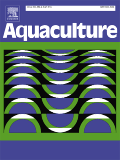
AQUACULTURE
Pioneering research in the heart of aquaculture innovation.AQUACULTURE is a premier academic journal dedicated to the field of aquatic science, published by Elsevier. With a robust Impact Factor, the journal is renowned for its significant contributions to aquatic biology and the sustainable development of aquaculture practices. Since its inception in 1972, AQUACULTURE has established itself as an essential resource for researchers and professionals in the industry, regularly ranked in the Q1 category of aquatic science journals and positioned in the 14th percentile of its field according to Scopus rankings. Covering a wide array of topics including fish biology, aquaculture technology, sustainable practices, and environmental impacts, AQUACULTURE aims to disseminate innovative research findings that drive the industry forward. The journal, accessible to a global audience from its base in the Netherlands, continues to foster collaboration, discussion, and application of research to both academic and practical realms within aquaculture. Researchers and students alike will find valuable insights and current trends in this highly respected publication.
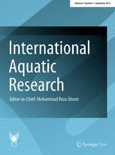
International Aquatic Research
Illuminating the wonders of marine and freshwater environments.International Aquatic Research, published by the Islamic Azad University, Tonekabon Branch, is a vital open-access journal dedicated to advancing the field of aquatic sciences since its inception in 2009. With an ISSN of 2008-4935 and an E-ISSN of 2008-6970, the journal plays a significant role in disseminating high-quality research findings from Iran and around the globe. It covers a broad range of topics in aquatic biology, fisheries science, and marine ecology, making it a valuable resource for researchers, professionals, and students alike. As of 2023, it ranks in the third quartile (Q3) of the aquatic science category with a Scopus rank of #138 out of 247 in Agricultural and Biological Sciences, reflecting its growing influence in the field. With a commitment to promoting scientific knowledge and fostering collaboration among aquatic research communities, International Aquatic Research is positioned as an essential platform for those dedicated to understanding and conserving marine and freshwater environments.

Large Animal Review
Elevating standards in large animal veterinary practice.Large Animal Review is a prestigious academic journal dedicated to advancing the field of veterinary science, particularly focusing on the health and management of large animals. Published by the SIVAR-SOC ITALIANA VETERINARI ANIMALI REDDITO, this journal is an invaluable resource for researchers, practitioners, and students eager to explore innovative methodologies, research findings, and case studies related to veterinary medicine for larger species. With a commitment to quality, Large Animal Review holds a Q3 categorization in the Veterinary (miscellaneous) sector according to the 2023 metrics, indicative of its growing influence within the academic community. The journal benefits from an international readership and is dedicated to fostering interdisciplinary collaborations, making it an essential addition to any professional's library. The journal is accessible through various platforms, ensuring wide distribution of its valuable content, as it strives to enhance the understanding and welfare of large animals across diverse settings.